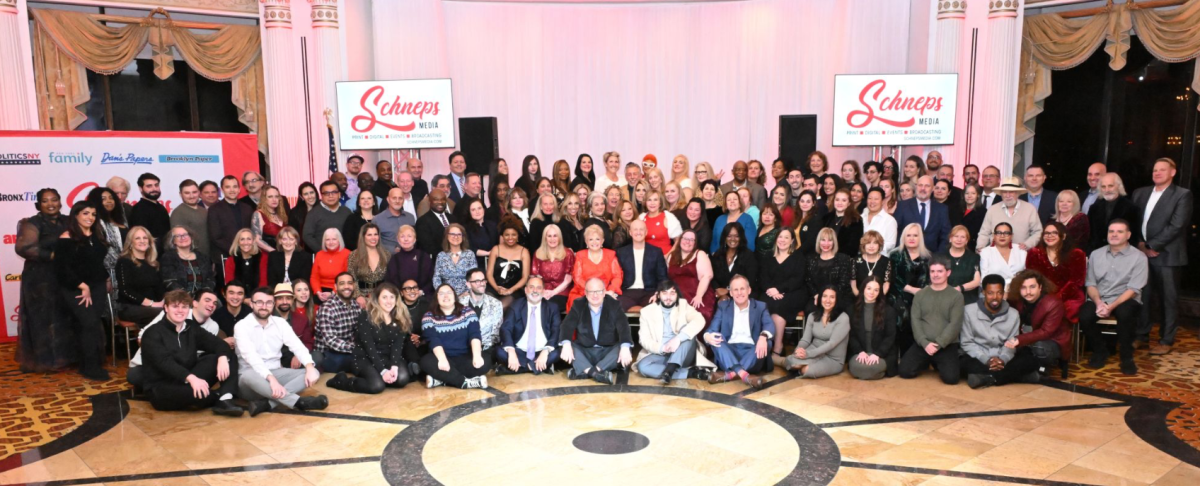Medical Monets trade scalpels for paintbrushes
Legendary photographer Paul Strand once said, “The artist’s world is limitless. It can be found anywhere, far from where he lives or a few feet away. It is always on his doorstep.” For Drs. Barry Douglas and Vincent DiGregorio, it’s the distance from the surgical theater to the painter’s easel. This was no more apparent than on Thursday, June 7, when the aspiring artists adorned an empty storefront on Franklin Street with a number of their pieces as a means of dressing up an otherwise vacant area.
While none of their creations were for sale, the duo wanted to do their part in contributing to the beautification of the village. Both physicians are part of Garden City’s Long Island Plastic Surgical Group and have also been involved with creating fine art for decades.
As a solitary violinist played classical music and a sushi chef kept a stream of sashimi and rolls coming, the crowd milled around and took in the paintings. With Dr. Douglas’ artwork constituting the lion’s share of wall space, the breadth of mediums he’s worked in over the years was startling. Along with the trio of museum-quality pastels that lined one wall, there was a wood sculpture on a pedestal, pen and ink sketches, oils and watercolors. This creative restlessness is something he’s dealt with ever since he began painting at the age of 2, only to later move on to create his first oil painting five years later.

“I tried a bunch of different things over time, plus I didn’t want to get pigeonholed into one specific medium,” he explained “In college, I was a studio art major and a physics major at [Trinity College], so I had this schizophrenic art and science thing, which makes sense because I’m a Gemini.”
The attention to detail that’s crucial in the operating room is clearly evident in a number of these unnamed works. In Douglas’ favorite piece, a pastel still life of a tabletop with a variety of inanimate objects on it, the embossed patterns encircling the teapot look tactile enough to run your fingers over were there is no glass barrier. Given the doctor’s prolific output, most would assume that art is an escape from the complexities of the operating room, but it’s quite the contrary as far as he’s concerned.

“What’s interesting is that people often ask me if I use the art for relaxation from the rigors of medicine but that’s not necessarily the case,” he said with a smile. “Sometimes it’s the other way around because art can be very frustrating. When you start a drawing or a painting, you’re confronted by a piece of white paper that is technically perfect. Perfect proportions. Perfect composition. And you are doing something to change that and it can be very daunting.”
For his colleague Dr. DiGregorio, art does serve an escape, but not necessarily from medicine but the difficulties of day-to-day life. “I find the two most relaxing activities in my life are painting and doing surgery. They’re both very similar because they are both interesting, all-consuming and filled with minutia,” he said with a grin. While the Brooklyn native’s training as a painter isn’t as in-depth as that of Dr. Douglas, the dedication and love he has for his artwork is no less passionate. An alumnus of Hobart and William Smith who got through school on a lacrosse scholarship, the jovial surgeon admits he had ulterior motives for picking up a paintbrush.

“Hobart went 13-1 [when I attended], so this was an elite program,” he explained. But at 6’2” and 140 pounds, he said he would get roughed up in lacrosse practice. “I used painting as a defense mechanism by taking painting courses in earnest so as not to go to practice,” he confessed.
While a broken arm caused by an errant stick effectively ended DiGregorio’s lax career, he continued his love affair with painting. By the 1980s, he was taking classes at the Art Students League. Part of his training was in an intensive workshop that found him traveling to the south of France every June for a decade.

“I have to say those were some of the happiest times of my life,” he wistfully recalled. “Painting is a wonderful way to travel and relax. You end up looking at things differently, particularly when you’re immersing yourself in another culture. It teaches you to look and observe.”
An admirer of French Impressionism, a number of his pieces depict beach scenes captured out at his Shelter Island home. Most of them are from a rear vantage point, something that has more to do with not alarming anyone who might not know he’s painting a panorama.
“A lot of times he’ll have to take pictures of what he’s going to paint and some people might find it a little unnerving to have some guy with a camera snapping their photos,” his wife Jennifer pointed out. “The times he’s done that, people look at him like he’s got three heads.”

As the crowd started to dwindle down, both men stopped long enough to share philosophies toward the role of art that range from the analogical to the metaphorical. “Medicine is that nice fusion of art and science when you put it together, you put it together and you have plastic surgery. The only difference is that you have a living, breathing canvas, ” said Dr. Douglas before Dr. DiGregorio added, “Painting is a journey. You start off with an idea and at some point, it departs and reaches its own natural conclusion.”





























